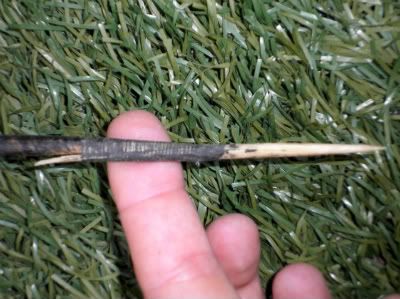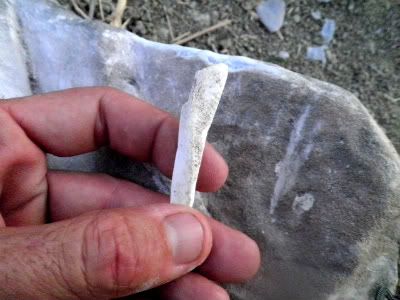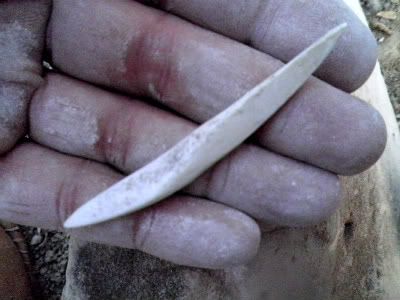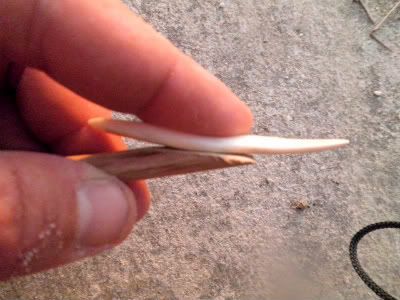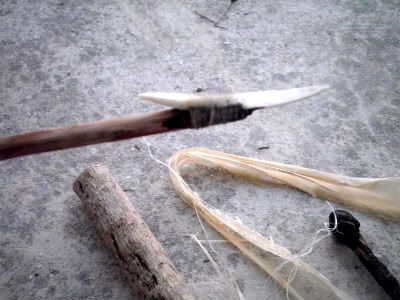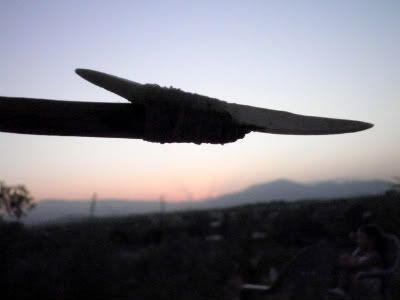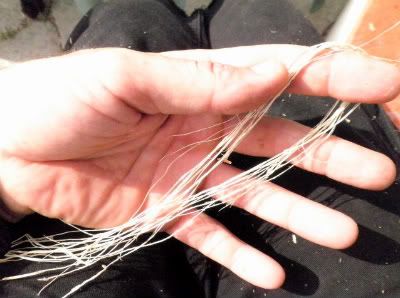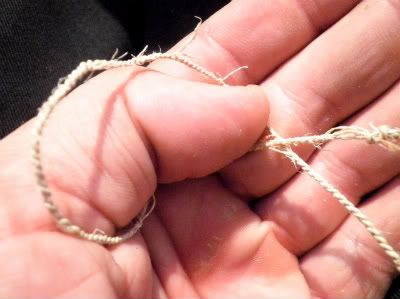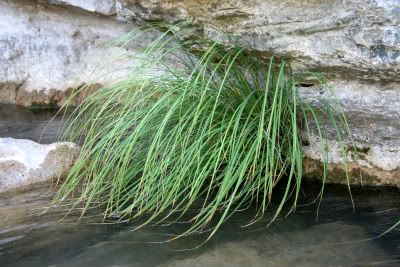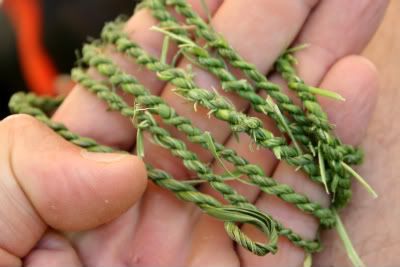Una opción sería hacer algo parecido a lo que hacen los yanomami, usar un hueso alargado para obtener una punta para sus arpones y flechas.
Auténtica punta de arpón yanomami (propiedad de mi amigo José Ogalla). Obsérvese la parte trasera del hueso colocado de manera tal que forma la parte que impedirá que la presa se desprenda del arpón.
Real yanomami harpoon point (owned by my friend josé Ogalla). Check out the bone´s rear end, placed in such a way that it will avoid to get out of the fish or animal.
Trabajando un trozo de hueso, con una forma similar a lo que busco, contra una piedra porosa...
Working on a piece of bone with the right shape, against a porous stone...
Se obtiene algo que puede servir para nuestra punta de proyectil.
We get something that could be our projectile point.
La punta de nuestro astil tiene que tener el ángulo adecuado.
The shaft has to be shaped in the right angle.
Lo pego con resina de pino.
Sticking it using pine pitch glue.
...y lo ato con tendón de ciervo,
...and i tied it using deer sinew.
Y la punta de inspiración yanomami está terminada. Me gusta ver cómo diferentes soluciones se dan para un mismo problema en diferentes partes del mundo, usando lo que se tiene a mano.
And the yanomami inspired point is finished. I like to see how different solutions have been found for the same problem in diferent parts of the world, using whatever the material is at hand

